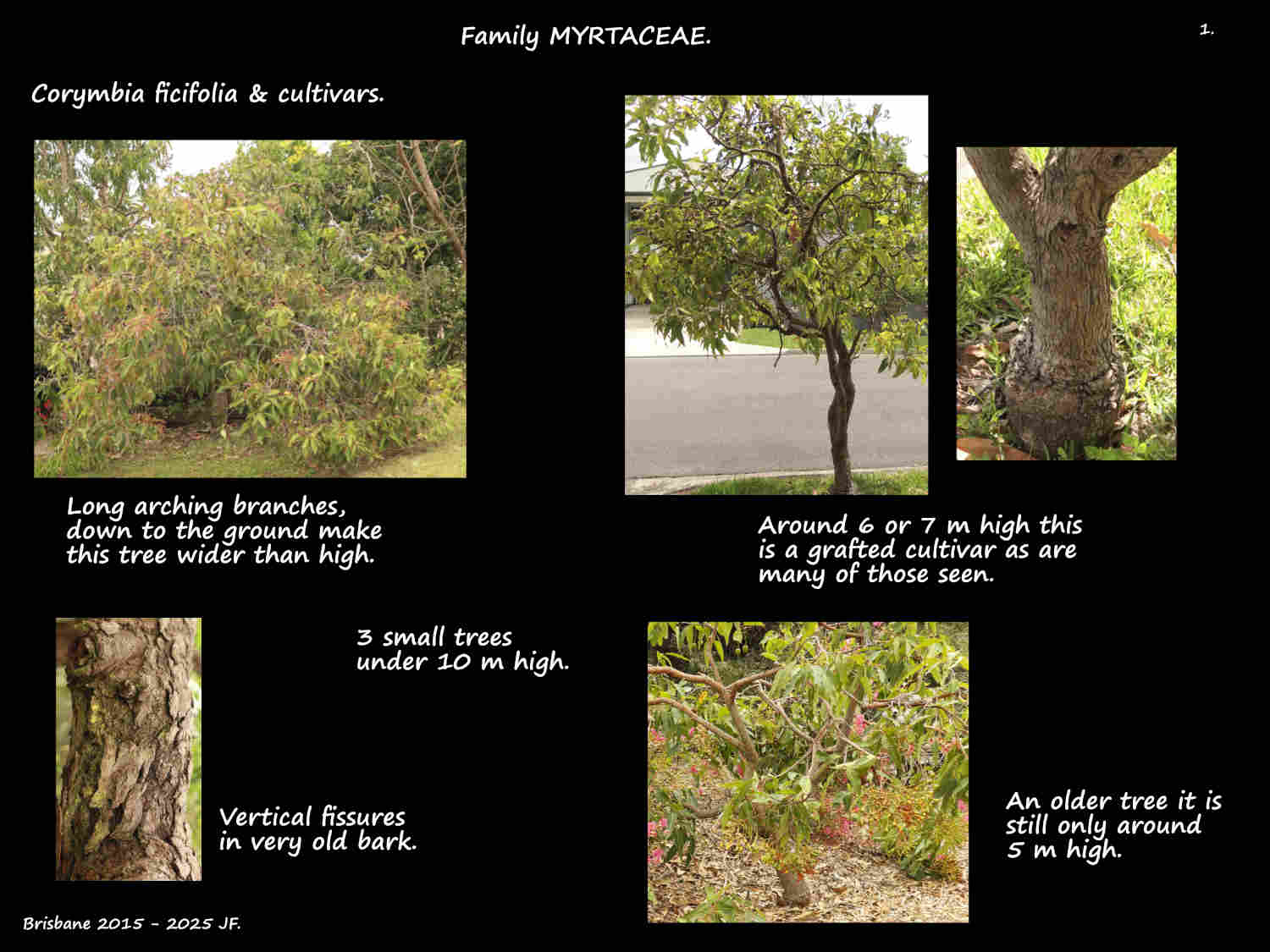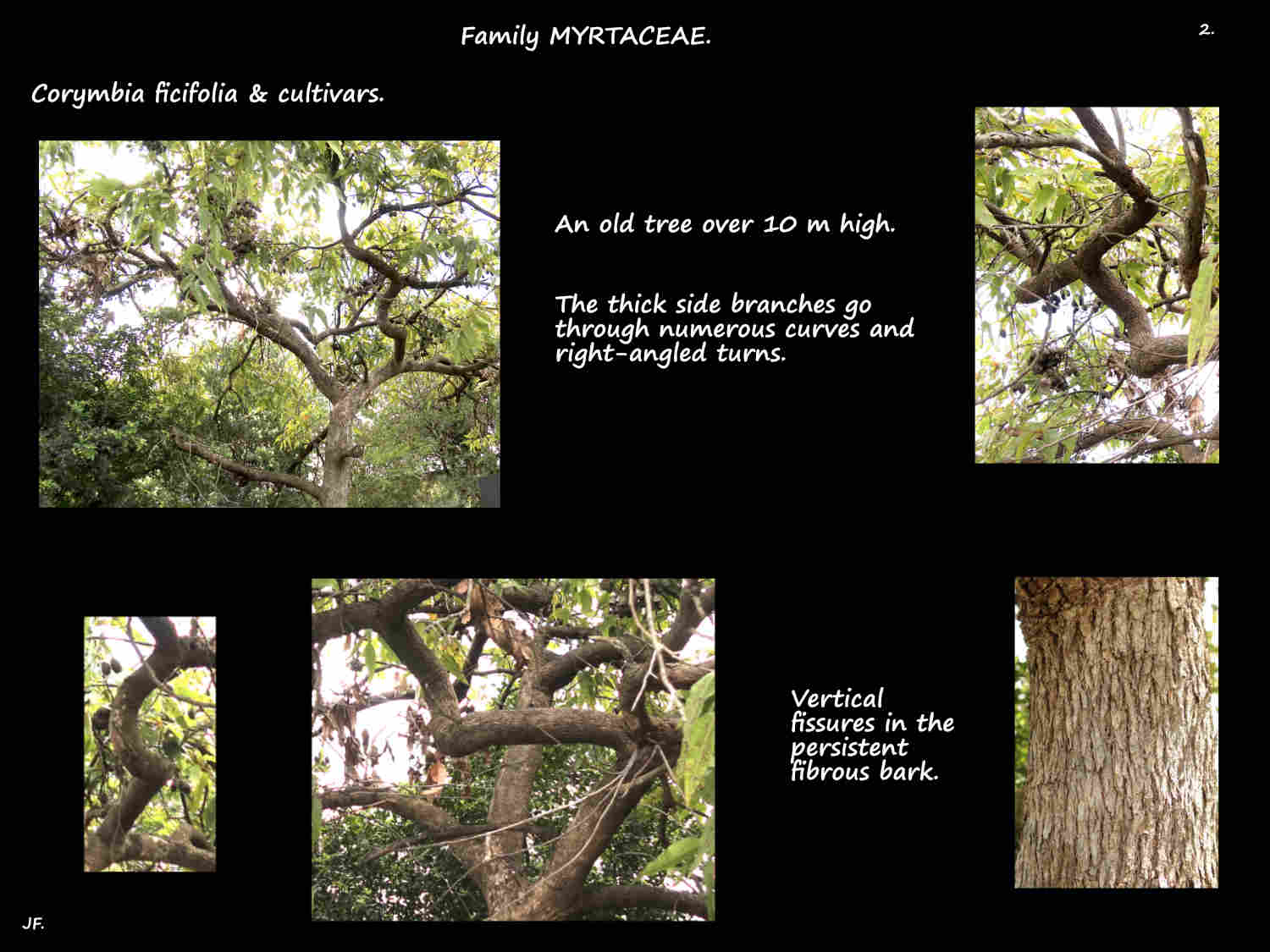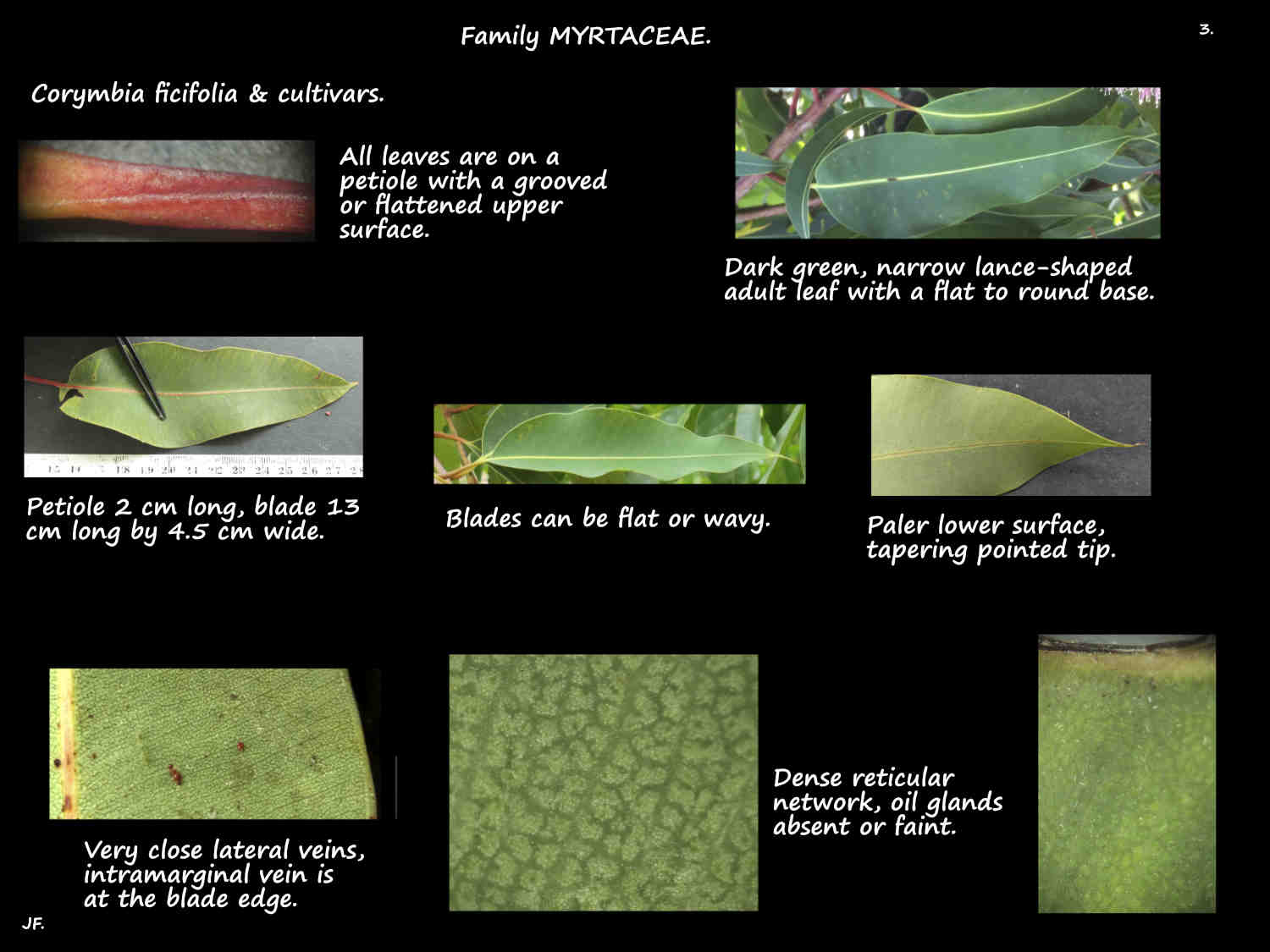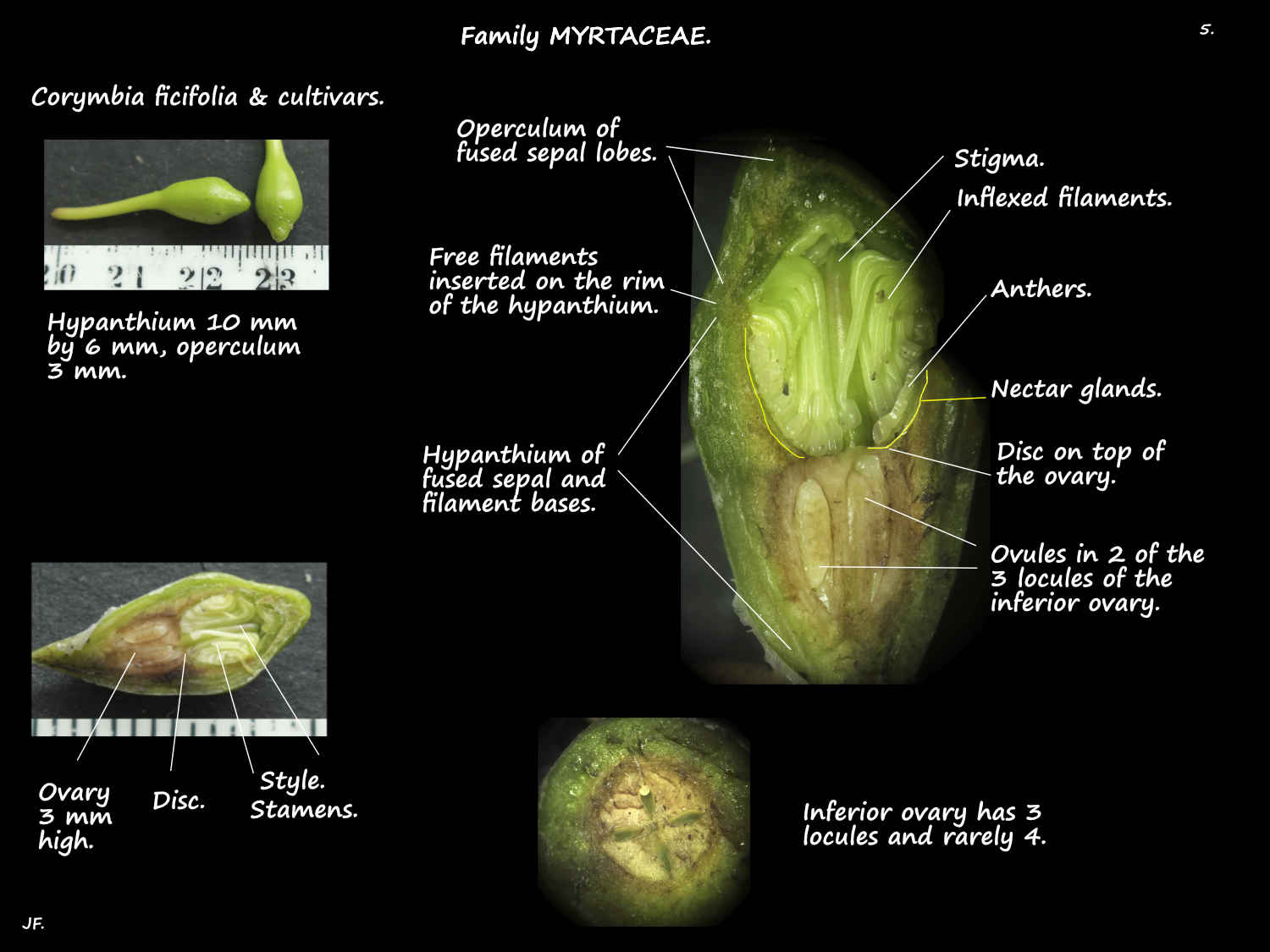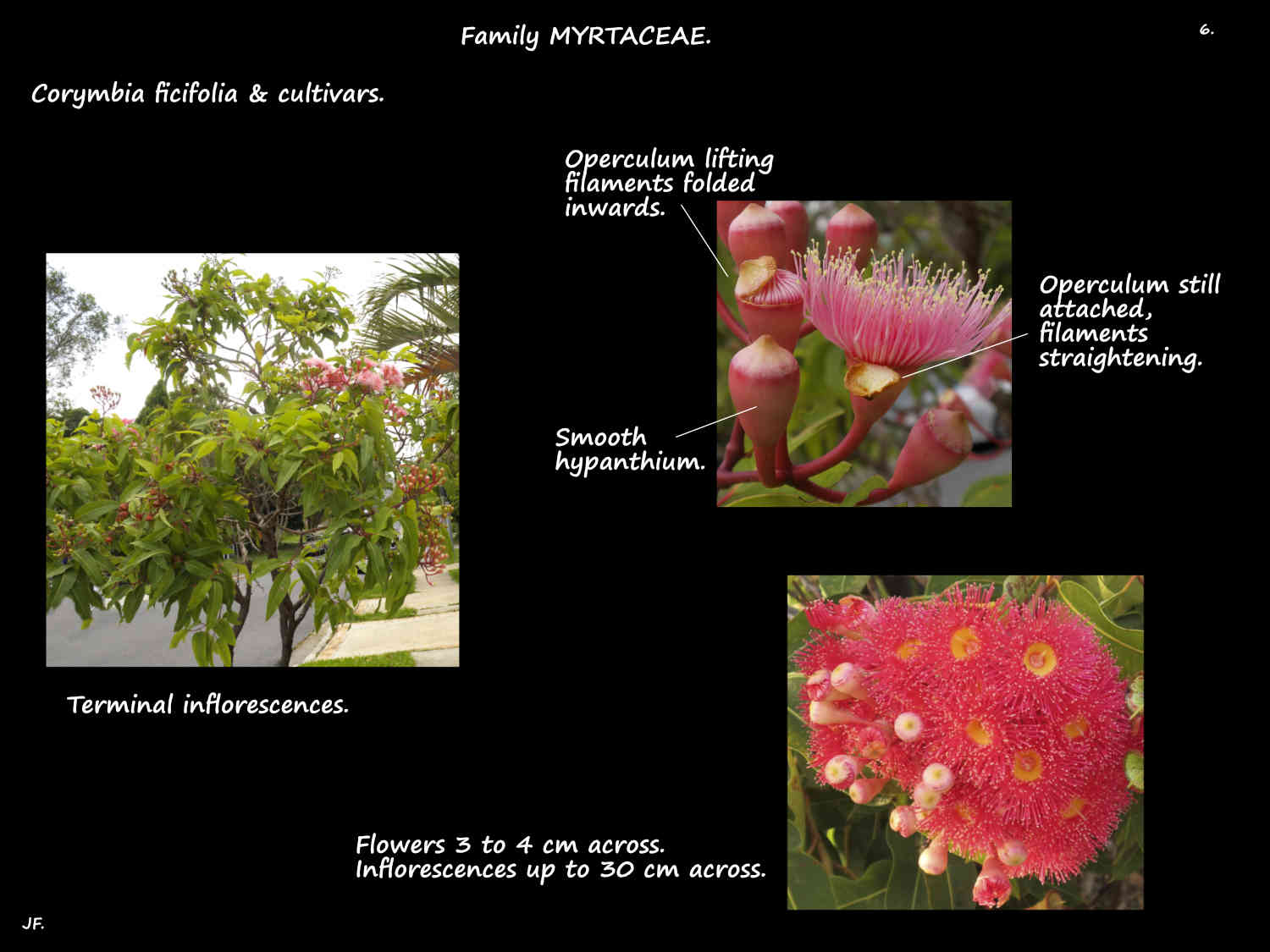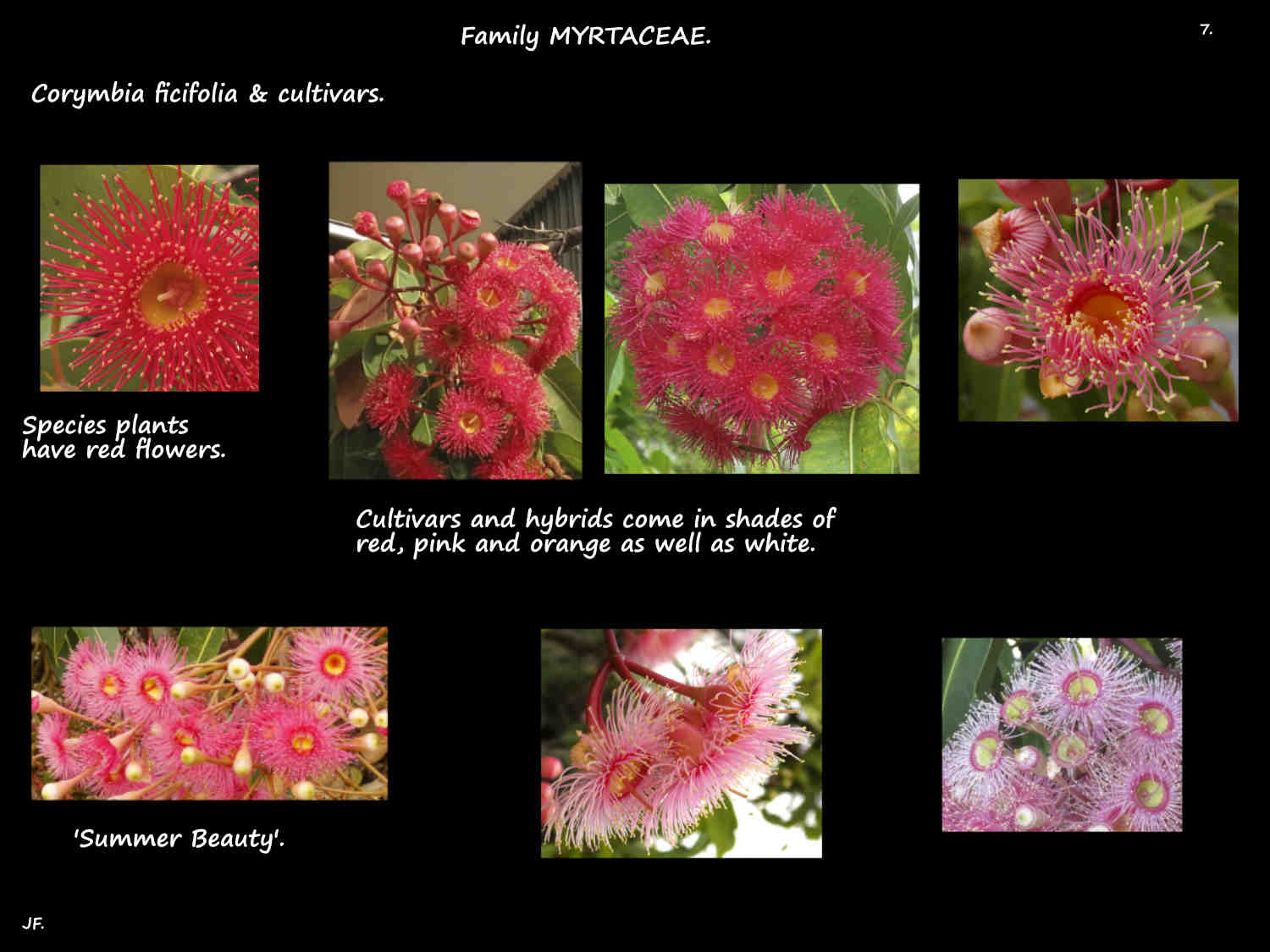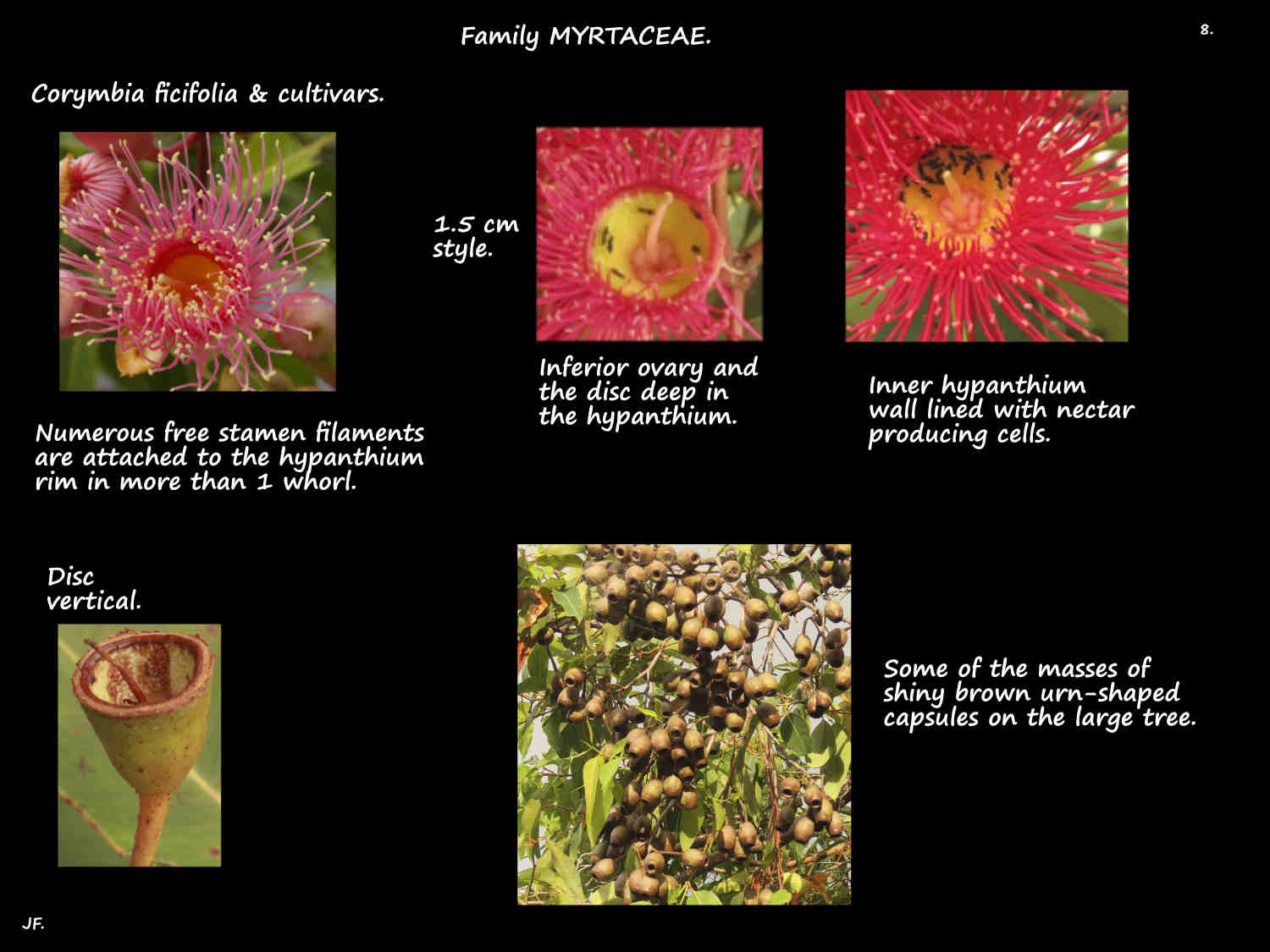In Family Myrtaceae it was known as Eucalyptus ficifolia until 1995.
The Red-flowering gum is native to Western Australia.
It is a common tree in Brisbane gardens, parks and streets.
The small trees can grow to 15 m but in cultivation are more like 5 to 10 m.
They develop a lignotuber – a swollen area on a rhizome (underground stem).
Sometimes there is more than 1 trunk.
Bark on the trunk and branches is persistent.
The rough grey-brown bark is fibrous and develops vertical fissures.
It may break into small pieces becoming tessellated.
Long thick branches spread sideways and some trees are wider than high.
The first few kidney-shaped to round leaves may be opposite.
All later leaves are alternate and on a petiole.
Juvenile leaves, up to 13 cm long are round or a wide ovate or lance-shape.
They have stiff hairs mainly on the lower surface making them feel rough or bristly.
Adult leaves are on a grooved or flattened petiole 1 to 2 cm long.
The ovate to wide lance-shaped blades can be up to around 14 cm long and 5 cm wide.
The base usually tapers and the tip is pointed.
The edge may be wavy and the lower surface is much paler.
The very close parallel side veins join the intramarginal vein which is at the leaf edge.
The dense reticular veins usually have no, or hard to see oil glands between them.
Branched terminal inflorescences, on a short peduncle are up to 30 cm across.
Terminal branches hold 3 to around 7 flowers in umbels.
Flowers, attached to the tip of the peduncle are on pedicels around 2.5 to 3 cm long.
Mature smooth ovate to club-shaped buds are around 15 mm long and 6 or 7 mm wide.
The hypanthium, of fused sepal and filament bases is around 12 mm long.
The fused sepal lobes form the around 2 to 3 mm long operculum.
This is hemispherical but may be slightly flattened.
It falls without leaving a scar on the rim of the hypanthium.
The numerous free stamen filaments are on the rim of the hypanthium.
Up to 1.5 cm long they are bright red and give flowers their colour.
Cultivated flowers, grown from seed may be shades of pink or orange.
There are also white or cream forms.
In the bud the filaments are curled inwards so the anthers lie on top of the disc.
When mature the widely spreading stamens make flowers 3 to 4 cm across.
Small dorsifixed anthers open through longitudinal slits.
The inferior ovary lies in the bottom half of the hypanthium.
The 3 locules each have numerous randomly attached ovules.
The style, longer than the stamens has a stigma with tiny papillae.
Nectar producing cells line the disc (on the top of the ovary) and inner hypanthium wall.
Trees are commonly seen with many lorikeets collecting the nectar.
Fruit are a woody urn-shaped loculicidal capsule up to 4 cm long and 3 wide.
Occasionally they lack a constricted neck making them more spherical.
They are on a stalk around 2.5 cm long.
The disc is almost vertical and the valves lie deep in the capsule.
Dark seeds, with a terminal wing are around 15 mm long.
On some seeds a narrow wing may extend down the sides.
Capsules can remain on the tree for a year.
There are a number of cultivars, including small 3 m high and wide trees.
J.F.

